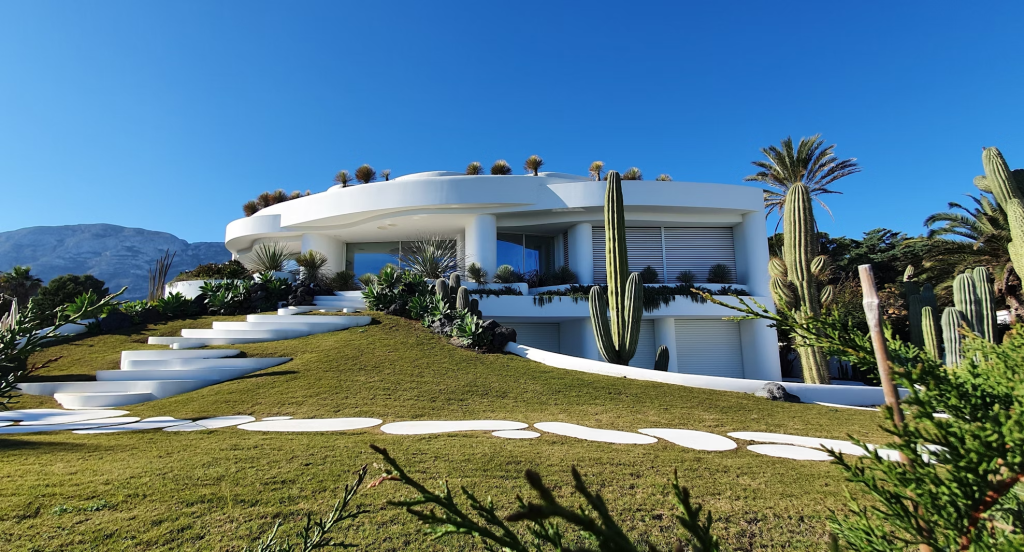Landscaping is an essential element of garden design, offering a means to transform outdoor spaces into aesthetically pleasing and functional areas. Whether you’re designing a small backyard or a large garden, understanding the different types of garden landscaping can help you choose the style and approach that best suits your space, lifestyle, and budget.

Below is a comprehensive guide to various landscaping styles that can be applied in Australian gardens.
Click Have A Peek At These Guys For More Details
Types Of Garden Landscaping: A Comprehensive Guide
Formal Garden Landscaping
Formal garden landscaping is characterised by its structured, symmetrical design, often with geometric shapes, straight lines, and balanced features. This style is perfect for creating an elegant and polished look in your outdoor space.
Key Features:
- Symmetry and Balance: Paths, hedges, and plants are arranged symmetrically, creating a sense of order and precision.
- Geometric Patterns: Use of square or rectangular garden beds, fountains, and other features arranged in straight lines.
- Neatly Trimmed Hedges: The use of topiary and hedges trimmed to precise shapes is a hallmark of formal gardens.
- Water Features: Fountains, ponds, and reflective pools are often included as central features.
Formal landscaping is often seen in traditional Australian garden designs, particularly for large estates and heritage properties. This style suits those looking for a high-maintenance but elegant garden that offers a sense of grandeur.
Informal Garden Landscaping
In contrast to the rigid structure of formal gardens, informal garden landscaping celebrates natural beauty and randomness. This style mimics the appearance of wild, untamed nature, with plants arranged in a less orderly manner.
Key Features:
- Curved Paths and Borders: Organic, flowing lines replace straight paths, mimicking the natural flow of the landscape.
- Mix of Plants: A variety of plants, including wildflowers, grasses, and shrubs, are used to create a sense of abundance and diversity.
- Natural Materials: Materials like stone, gravel, and timber are often incorporated to maintain an earthy and rustic feel.
- Relaxed Atmosphere: The layout encourages a more relaxed, serene vibe, with an emphasis on creating areas for relaxation and contemplation.
Informal gardens can be ideal for Australian homes that want to evoke a relaxed, rural or cottage-style atmosphere. They require less maintenance and allow for more creativity in plant selection and arrangement.
Tropical Garden Landscaping
Tropical gardens offer a lush, vibrant style that is perfect for warmer climates. With their lush greenery and striking colours, tropical landscapes can create a paradise-like atmosphere.
Key Features:
- Exotic Plants: A wide range of tropical plants, such as palm trees, ferns, hibiscus, bougainvillea, and banana plants, are used.
- Bold Colours: Bright, vibrant flowers and foliage create a tropical aesthetic, with hues of orange, pink, purple, and red.
- Water Features: Waterfalls, ponds, and streams are often incorporated to enhance the tropical feel.
- Layered Planting: Plants of varying heights are arranged to create a layered effect, giving the garden a dense, jungle-like appearance.
Tropical gardens are particularly suitable for Australian homes in regions with warm climates, such as Queensland and Northern New South Wales, where the conditions are ideal for growing lush and colourful plants.
Cottage Garden Landscaping
Cottage gardens are known for their charming, rustic appeal, combining flowers, herbs, and vegetables in a seemingly haphazard yet beautiful way. This style evokes a sense of nostalgia and simplicity.
Key Features:
- Mixed Planting: A mix of flowers, herbs, vegetables, and fruit plants are grown together, often in dense, overflowing beds.
- Natural Materials: Timber, stone, and wrought iron are commonly used for garden structures such as fences, trellises, and arbours.
- Informal Paths: Gravel, cobblestone, or stepping stone paths wind their way through the garden, creating a charming, picturesque feel.
- Quaint Features: Garden ornaments such as birdbaths, old-fashioned lanterns, and rustic benches add to the whimsical charm.
Cottage gardens are well-suited to Australian homes looking for a quaint, low-maintenance landscape. They are perfect for small spaces, where a mix of edible plants and colourful flowers can thrive in an inviting, functional environment.
Modern Garden Landscaping
Modern gardens prioritise clean lines, minimalism, and functionality. This style is all about creating sleek, contemporary spaces that feel fresh and uncluttered, often incorporating modern materials and design principles.
Key Features:
- Minimalist Design: Simple, uncluttered layouts with a focus on space and balance.
- Straight Lines and Geometric Shapes: Concrete pathways, rectangular garden beds, and square planters are common in modern gardens.
- Contemporary Materials: Materials like steel, concrete, glass, and stone are often used to create a polished, modern look.
- Sculptural Elements: Minimalist sculptures, modern fountains, and abstract art pieces add to the aesthetic of the garden.
Modern garden landscaping is ideal for Australian homes that favour a contemporary, streamlined look, particularly those in urban or suburban areas. The low-maintenance nature of modern designs makes them a good fit for busy homeowners.
Native Australian Garden Landscaping
Native Australian gardens focus on using plants that are indigenous to Australia. This landscaping style promotes sustainability by using plants that are adapted to local climates and ecosystems, making them easier to maintain.
Key Features:
- Indigenous Plants: A focus on native Australian plants such as bottlebrush, grevillea, kangaroo paw, and eucalyptus.
- Drought-Tolerant: Many Australian natives are drought-resistant, making this style ideal for regions with water scarcity.
- Wildlife-Friendly: These gardens are designed to attract and support local wildlife, such as birds, insects, and small mammals.
- Minimal Watering: Native plants generally require less water and maintenance once established, making them perfect for Australian climates.
Native gardens are especially well-suited to Australian homeowners who want to reduce water usage and promote local wildlife while creating a sustainable, environmentally friendly landscape.
Xeriscape Landscaping
Xeriscape Landscaping focuses on water conservation, using drought-tolerant plants and efficient irrigation techniques. It’s an excellent choice for areas experiencing water restrictions or dry climates.
Key Features:
- Drought-Tolerant Plants: Succulents, cacti, and hardy native plants are commonly used in xeriscape gardens.
- Efficient Irrigation: Drip irrigation systems and other water-saving techniques are incorporated to minimise water use.
- Mulch: Mulch is used to retain moisture and reduce water evaporation from the soil.
- Low-Maintenance: This type of garden requires minimal upkeep, as the plants are well-suited to the local climate.
Xeriscape landscaping is ideal for Australian homes in arid regions or areas facing drought conditions. It’s a sustainable and water-efficient approach to gardening that reduces environmental impact.
Japanese Garden Landscaping
Japanese gardens offer a serene and minimalist design that encourages contemplation and harmony with nature. These gardens are inspired by traditional Japanese aesthetics and are often designed to evoke feelings of peace and tranquillity.
Key Features:
- Natural Elements: Stones, water features, sand, and plants such as bonsai, bamboo, and moss are central to Japanese gardens.
- Zen Influence: The concept of Zen influences the design, with an emphasis on simplicity, balance, and natural beauty.
- Symbolism: Many elements of Japanese gardens, such as bridges, lanterns, and water features, have symbolic meanings.
- Pruned Trees: Carefully pruned trees and shrubs are used to create a sense of order and refinement.
Japanese gardens are well-suited for Australian homes that value a tranquil, minimalist space. They can be particularly effective in smaller spaces, as the design principles focus on creating a sense of calm without the need for large areas.
Mediterranean Garden Landscaping
Mediterranean gardens draw inspiration from the landscapes of southern Europe, characterised by their warm, inviting colours and drought-tolerant plants. This style is perfect for Australian homes in coastal or dry regions.
Key Features:
- Warm Colours: Terracotta pots, stone walls, and plants with silver-grey foliage create a warm, sun-drenched atmosphere.
- Mediterranean Plants: Plants such as lavender, olive trees, rosemary, and bougainvillea are commonly used.
- Terracing and Stonework: Raised beds, stone walls, and terraced landscapes are often incorporated.
- Outdoor Living: Mediterranean gardens are designed with outdoor entertaining in mind, featuring patios, outdoor kitchens, and shaded areas.
Mediterranean gardens are well-suited for Australian homes in coastal or semi-arid regions, where the climate mimics the warmth of the Mediterranean. They offer a beautiful and low-maintenance landscape that enhances outdoor living.
Conclusion
There are many different types of garden landscaping to choose from, each with its unique style and benefits. Whether you’re drawn to the symmetry and elegance of formal gardens, the rustic charm of cottage gardens, or the sustainability of native Australian gardens, the possibilities are endless.Choosing the right landscaping style for your garden depends on various factors, including climate, the size of your space, your lifestyle, and the amount of maintenance you’re willing to undertake.
With careful planning and consideration, you can create a beautiful outdoor space that complements your home and enhances your lifestyle.Remember to consult with landscaping professionals who can help bring your vision to life and ensure that your garden is both beautiful and functional for years to come.
Frequently Ask Question
How Do I Create A Low-Maintenance Garden?
To create a low-maintenance garden, it’s essential to choose plants that are well-suited to your local climate and soil conditions. Opt for native plants, as they are typically more drought-tolerant and require less ongoing care. Additionally, incorporating mulch can help retain moisture and suppress weeds, reducing the need for frequent watering and weeding. Simplifying your garden design by using hard landscaping elements, like gravel paths and stone features, will also reduce maintenance time. Automated irrigation systems and efficient plant placement can further reduce the time and effort required to maintain the garden.
What Type Of Landscaping Is Best For A Small Garden?
For a small garden, a mix of vertical gardening, container gardening, and compact plant varieties works well. Using vertical structures, such as trellises or hanging baskets, allows you to maximise space while still creating a lush, green environment. Incorporating low-maintenance plants that don’t require a lot of room will help create a more spacious feeling. You might also want to include clever design tricks, such as mirrors or light-coloured walls, to make the space feel larger. Careful planning of pathways and seating areas will ensure your garden is both functional and visually appealing.
What Is The Importance Of Landscaping Design?
Landscaping design plays a crucial role in enhancing the aesthetic appeal, functionality, and value of a property. A well-planned garden can create outdoor living spaces that suit your lifestyle and complement the architecture of your home. Landscaping also helps manage environmental factors, such as water runoff, temperature regulation, and soil erosion. It can increase curb appeal, making your property more attractive to potential buyers if you decide to sell. Additionally, thoughtful design can contribute to sustainability by promoting native plants and reducing water consumption.
